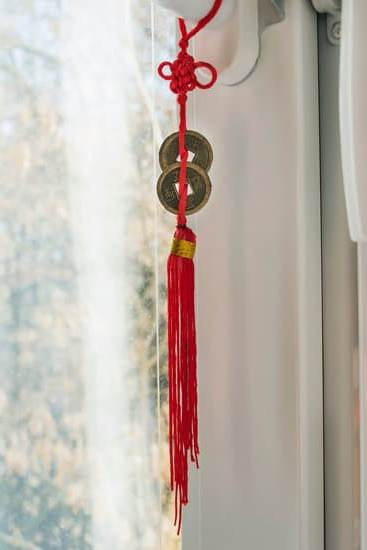Introduction to Feng Shui and Bedroom Colors
Feng Shui is a Chinese philosophy focused on living in harmony with your natural surroundings. It is based on the idea that energy, known as chi, can be harnessed to create balance and flow within a space, promoting health and good fortune. In this way, Feng Shui seeks to nurture healthy relationships, create calming and comfortable spaces, and maintain order in our lives.
When it comes to bedroom colors, Feng Shui emphasizes the importance of choosing warm, restful shades such as blues, greens, pinks and mauves. These colors are believed to promote relaxation and encourage sound sleep. Colors should also be chosen thoughtfully so as not to bring too much contrast or tension into the bedroom; sticking to one or two main colors will usually do the trick. When creating a beautiful but peaceful palette for your bedroom paint job or bedsheets you could select complementary colors like pink and green for a soothing atmosphere of balance and harmony. This combination could also work really well against pure white walls — adding just enough contrast without feeling jarringly bright. It’s also important to pay attention to fabrics when choosing your bedroom’s color scheme: soft materials like cotton or velvet will serve you best!
Benefits of Incorporating Feng Shui into Bedroom Design
Feng Shui has been used for centuries in order to aid sleep and relaxation. Incorporating Feng Shui into your bedroom design can create a sense of spaciousness, harmony, and peace. Using certain colors in a bedroom can help facilitate these feelings as well as provide an energy flow that is conducive to restful sleep patterns and relaxation.
When selecting the proper bedsheet color, light colors such as pastel blues, lilacs, beiges, yellows, or greens are recommended due to the uplifting effects it has on mood and spirit. Additionally, having lighter colors will maximize natural light sources which helps promote positive energy throughout the bedroom as well as providing dynamic energy when accessorizing and creating movement around the space.
Dark sheets such as those with gray or black tones should also be used sparingly. Darker sheets are calming and can help with grounding energies within a room making them great for bedrooms wanting to achieve a more tranquil effect. However too much dark tones can make scents of lethargy and gloom which would disrupt good energy flow in the environment.
By incorporating Feng Shui into your bedroom design you will be able to create optimal sleeping conditions that are both peaceful and energizing at times when desired – plus feel comfortable in prepared surroundings filled with harmonious elements from surrounding furniture pieces to areas like wall art or window treatments selections that all come together cohesively together.
Recommended Feng Shui Bedroom Colors
White: White is a color associated with airiness and freshness. It provides a calming atmosphere to the bedroom and can be used in various decor designs to give it a contemporary yet peaceful feel. Examples of decor design include using white furniture, walls, and ceiling; light fabrics such as cotton, linen, or silk; and adding light accent pieces like throw pillows and artwork.
Beige: Beige is a timeless neutral color associated with natural tones. It’s creamy hue adds warmth to the bedroom while still remaining calming and harmonious. Examples of decor design include pairing beige walls with wooden furniture pieces; layering various patterned white or beige fabrics for the beddings; and adding textures like woven rugs.
Blue: Blue is associated with trust, security, peace, and wisdom. The hue creates an uplifting atmosphere that encourages relaxation in the bedroom. Examples of decor designs could include blue velvet headboards against cream-colored walls; navy blue furnishings contrasted by light-toned flooring; combining blues like powder blue sheets with navy blue pillows or blankets for added depth.
Green: Green is the color of nature that symbolizes verdant growth and abundance. It creates a tranquil environment in the bedroom, encouraging harmony between you and your partner who may share it together. Examples of decor designs can include creating an oasis with green plants surrounding you while sleeping; hanging wallpapers representing foliage or junglescapes; carpeting adorned with leafy prints; coupling deep greens on the bed sheet with sage colored walls as accents.
Color Combinations and Accents
The colors used in a bedroom are important to create a balance of energy. Feng Shui bedsheets can help achieve this. A general rule is to avoid loud colors and choose more muted, light shades in the main areas of the room, such as on walls and flooring. For example, a light grey wall could be the backdrop for yellow or pink duvet covers to bring warmth and satisfaction into the space; while softer blues can help relax your body and mind.
Accents should be used sparingly in feng shui bedroom design – too many objects can create an overwhelming atmosphere that overpowers other areas of the space. An accent wall with bright but subtle wall art, drapery panels and/or an area rug can add splashes of contrast that brings positive chi into the environment, without detracting from the overall calming ambiance of the room. Consider choosing accent pieces in complementary colors that contrast but still harmonize with each other – think neutrals paired with soft reds or blues, combined with pops of bolder hues near accessories like throw pillows or blanket baskets. Accessories such as candles and lamps should also be coordinated along these lines to contribute further to a balanced energy flow throughout the entire space.
Incorporating the Five Elements of Feng Shui
Feng Shui Bed Sheet colors can be used to create a peaceful and harmonious atmosphere in the home. Their use alongside the five elements of Feng Shui can create a more balanced energy flow, as well as visually enhance the space in which it is used.
Wood element colors, such as green and brown, can be used to signify growth while utilizing earthy tones like cream or beige to give warmth and comfort to the bedroom. Fire colors – such as reds, oranges, yellows and purples – can bring life and vivacity into the space. Metal element colors – such as whites and silvers – bring clarity and lightness while water element colors – blues, deep greens – can give a sense of calm.
It is important to consider how much of each color is going to be used in order not to overload a room with one dominating color. A balance should be sought between all five elements so that the Qi flow in your bedroom isn’t disturbed or cluttered by too many competing design elements. It’s also advised that metallic accents are kept minimal or avoided entirely since these energetic frequencies can disrupt the natural flow of Qi energy within a given environment.
Decorating with Feng Shui
Feng Shui is an ancient Chinese system of aesthetics to promote health, wealth and good luck. When it comes to bed sheets and colors, it is important to be mindful of the Feng Shui principles when selecting color scheme for decoration. Here are some tips to consider:
• Avoid any overly bright or harsh colors as these can create too much energy in the space. Blues, greens, and whites are always great options because they promote relaxation and calming energy.
• Avoid clutter as it will create a chaotic atmosphere instead of a calming one. Make sure that you only keep items on the bed that are absolutely necessary for daily use such as alarm clock and nightstand or lamp.
• If you plan on having mirrors in your bedroom, be aware that reflective surfaces can disrupt chi energy and cause imbalance in feng shui system so place them carefully if putting them up at all.
• Clear pathways are important in Feng Shui. It is advised that there should be no obstruction between your entrance door and window so make sure furniture is placed far enough away from door opening to allow easy access around room. This helps promote positive energy circulation throughout space.
Conclusion
According to the principles of Feng Shui, the colors used for a bedsheet set in your bedroom should be calming and relaxing. Colors such as light blues, lavender, greens, pastels, sandy hues and ivory help foster a feeling of peace. Bright colors may bring energy into the room and thus have a stimulating effect which is not conducive to restful sleep. Incorporating Feng Shui ideas into a bedroom design is essential to create an environment that is conducive to relaxation and restfulness. When using any color in Feng Shui it is important that the right tone or shade or hue be chosen – this will contribute greatly to helping create the desired atmosphere.
When getting started with Feng Shui it is recommended that you start by analyzing the space available in your bedroom (including what color furniture you have or plan on bringing in). Secondly assess your emotional needs and choose colors that you feel best reflect them in your bedroom design by consulting an expert if necessary. Finally use these colors when selecting bed sheets, pillowcases, curtains and other items for your bedroom for maximum relaxation benefits.

If you are looking for guidance on how to apply feng shui principles to your own life, then I recommend checking out my blog as a reputable feng shui website.





